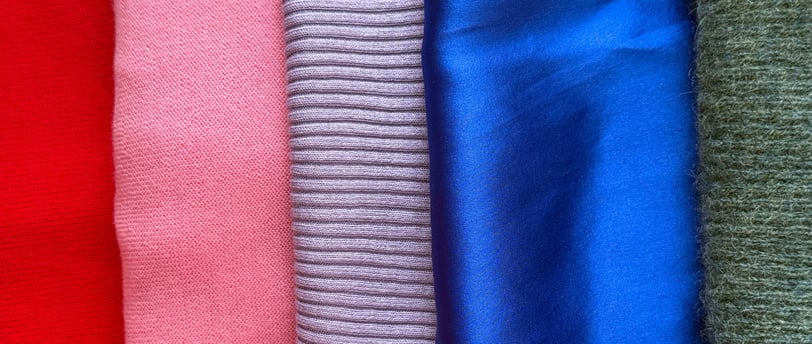Natural Fibres vs. Synthetic Fibers: Making Informed Choices for Your Wardrobe
Explore the differences between natural and synthetic fibers to make informed choices for your wardrobe. Discover eco-friendly clothing options that are stylish and sustainable.
LONGEVITY & ANTI-AGING/WELL-AGING
11/10/20242 min read


The clothes we wear impact not only our comfort and health but also the environment. Understanding the differences between natural and synthetic fibers can help make more informed choices about our clothing purchases and care.
Natural Fibers
Silk
Origin: Produced by silkworms
Benefits:
Extremely soft and comfortable
Natural temperature regulation
Highly breathable
Biodegradable
Hypoallergenic for most people
Drawbacks:
Expensive
Requires delicate care
Not suitable for vegans
Can be damaged by sunlight and perspiration
Cashmere
Origin: From cashmere goats
Benefits:
Exceptional warmth-to-weight ratio
Incredibly soft
Gets softer with age
Naturally moisture-wicking
Drawbacks:
Very expensive
Requires careful maintenance
Can pill easily
Limited sustainability due to overgrazing concerns
Wool
Origin: Primarily from sheep
Benefits:
Excellent insulation
Naturally water-resistant
Biodegradable
Durable
Fire-resistant
Drawbacks:
Can be itchy for some people
May shrink if not properly cared for
Some people are allergic
Cotton
Origin: Cotton plant
Benefits:
Highly breathable
Soft and comfortable
Biodegradable
Easy to care for
Drawbacks:
Water-intensive cultivation
Can shrink
Wrinkles easily
Retains moisture
Synthetic Fibers
Polyester
Benefits:
Durable
Wrinkle-resistant
Quick-drying
Inexpensive
Drawbacks:
Non-biodegradable
Petroleum-based
Releases microplastics
Can trap odors
May cause skin irritation
Poor breathability
Nylon
Benefits:
Strong and durable
Elastic
Wrinkle-resistant
Drawbacks:
Non-biodegradable
Petroleum-based
Poor breathability
Can generate static electricity
Environmental Impact
Natural Fibers
Positives:
Biodegradable
Renewable resources
Lower carbon footprint
Concerns:
Water usage (especially cotton)
Land use
Animal welfare concerns
Chemical treatments in processing
Synthetic Fibers
Major Environmental Issues:
Microplastic pollution
Non-biodegradable
Petroleum-based production
High energy consumption in manufacturing
Chemical pollution
Contribution to landfill waste
Health Considerations
Allergies and Sensitivities
Natural Fibers:
Wool allergies are common
Some people react to silk proteins
Natural fibers generally more breathable, reducing skin issues
Synthetic Fibers:
Can trap heat and moisture
May cause skin irritation
Can trigger contact dermatitis
More likely to harbor bacteria due to moisture retention
Care and Maintenance
Natural Fibers
Often require gentle washing
May need special detergents
Some need professional cleaning
Can be more prone to damage from improper care
Synthetic Fibers
Generally easier to care for
More resistant to damage
Can be machine washed
May retain odors more readily
Making Sustainable Choices
Best Practices
Choose quality over quantity
Consider second-hand clothing
Look for certified organic natural fibers
Check for sustainable production certifications
Properly maintain clothes to extend their life
Consider blended fabrics for specific uses
Research brands' environmental commitments
Recovery and Recycling
Natural fibers can be composted
Some synthetic fibers can be recycled
Look for brands with take-back programs
Consider upcycling worn clothing
While both natural and synthetic fibers have their place in modern wardrobes, understanding their properties helps make better choices for personal health and environmental impact. Natural fibers generally offer better breathability and biodegradability but may require more care. Synthetic fibers provide durability and ease of care but come with significant environmental concerns. The best choice often depends on the specific use case, climate, and personal preferences.
Optimize Your Health with Cutting-Edge Biohacking Research and Tech Wearable
© 2024. All rights reserved.
The content on this website is intended for informational purposes only and should not be considered as professional advice. It is not a substitute for personalized medical, nutritional, or fitness guidance. Please do not make any changes to your lifestyle, diet, or exercise routine based on the information provided here without first consulting with your healthcare provider. Always seek the advice of a qualified professional before implementing any new practices or treatments discussed on this site. Your health and safety are our top priority.


